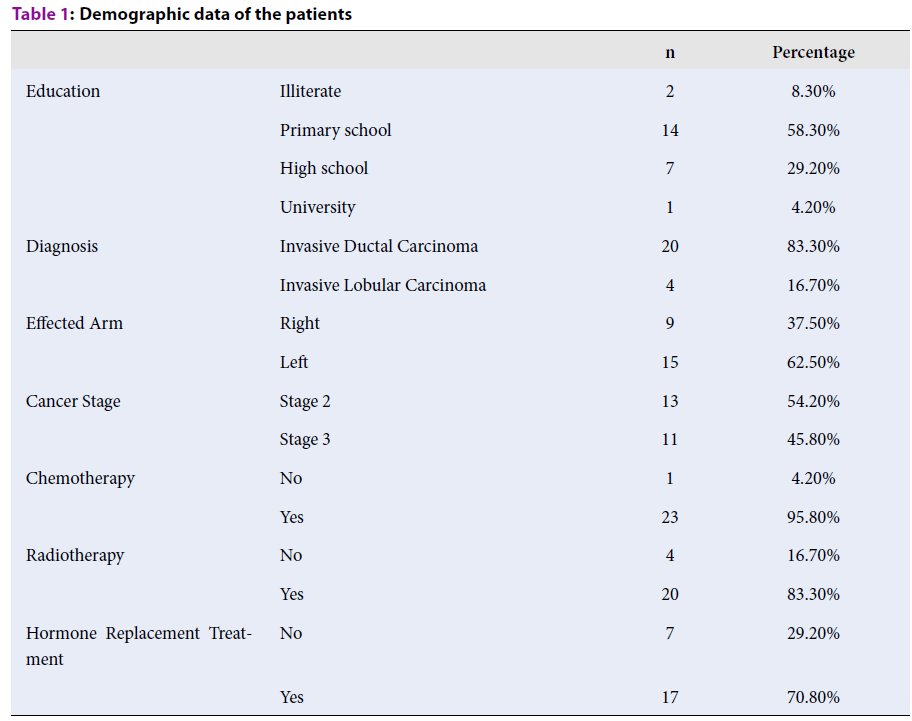The effect of low-level laser therapy on quality of life in postmastectomy lymphedema patients
DOI:
https://doi.org/10.15419/bmrat.v7i9.628Keywords:
Laser, Quality of Life, Postmastectomy LymphedemaAbstract
Introduction: In this study, the aim was to evaluate the effect of low-level laser therapy (LLLT) on quality of life in postmastectomy lymphedema (PML) patients.
Methods: Twenty-four female patients diagnosed with PML were included in the study. Demographic features, disease and lymphedema duration, cancer type, cancer stage, operation type, radiotherapy and chemotherapy history, lymphedematous and dominant extremity, and body mass index (BMI) were recorded. LLLT was applied to the affected limb as 904 nm, 1.5 Joule/cm2, three days a week for a total of 8 weeks. Quality of life assessment, lymphedema severity, and lymphedema staging was performed to measure effectiveness before and after treatment. Patients with lymphedema not associated with breast cancer and/or primary lymphedema, ongoing radiotherapy, metastatic high-grade breast cancer, acute infection, and deep vein thrombosis were excluded from the study.
Results: Modified radical mastectomy was reported in 18 patients; total mastectomy and sentinel lymph node biopsy were reported in 6 patients. Of the patients, 45.8% were stage 3, and 54.2% were stage 2. Of the patients, 95.8% had a history of chemotherapy and 83% of radiotherapy after surgery. In this study, following LLLT, improvement of lymphedema stage and severity were found to be statistically significant (p < 0.05). In the evaluation of lymphedema quality of life, there was a statistically significant improvement in parameters including function, appearance, clinical symptoms, and overall quality of life (p < 0.05). However, no improvement was observed in the emotional state parameter (p > 0.05).
Conclusion: Thus, LLLT is a safe treatment method that increases the quality of life in breast cancerrelated lymphedema patients.

Downloads
Published
Issue
Section
License
Copyright The Author(s) 2017. This article is published with open access by BioMedPress. This article is distributed under the terms of the Creative Commons Attribution License (CC-BY 4.0) which permits any use, distribution, and reproduction in any medium, provided the original author(s) and the source are credited.
